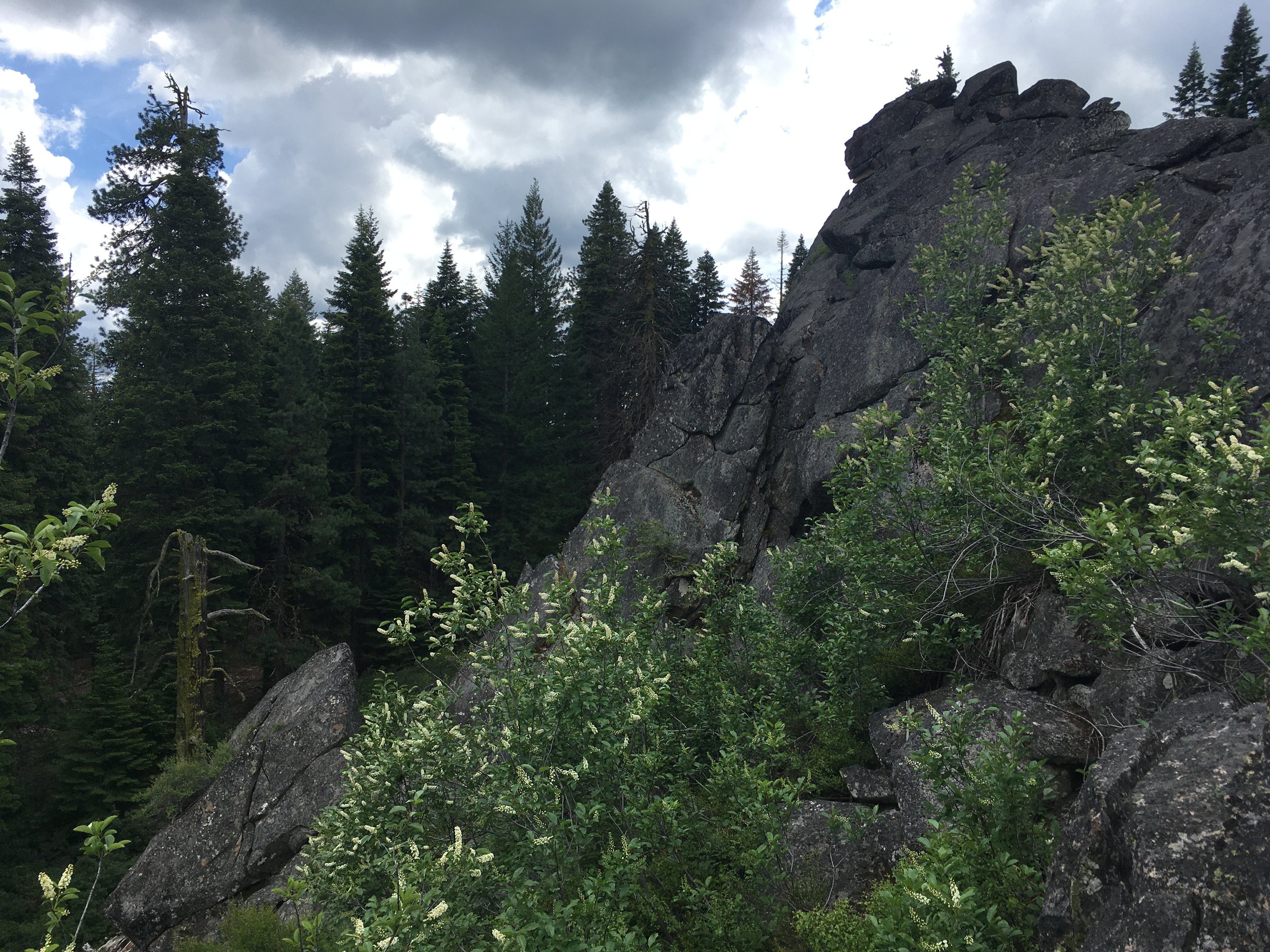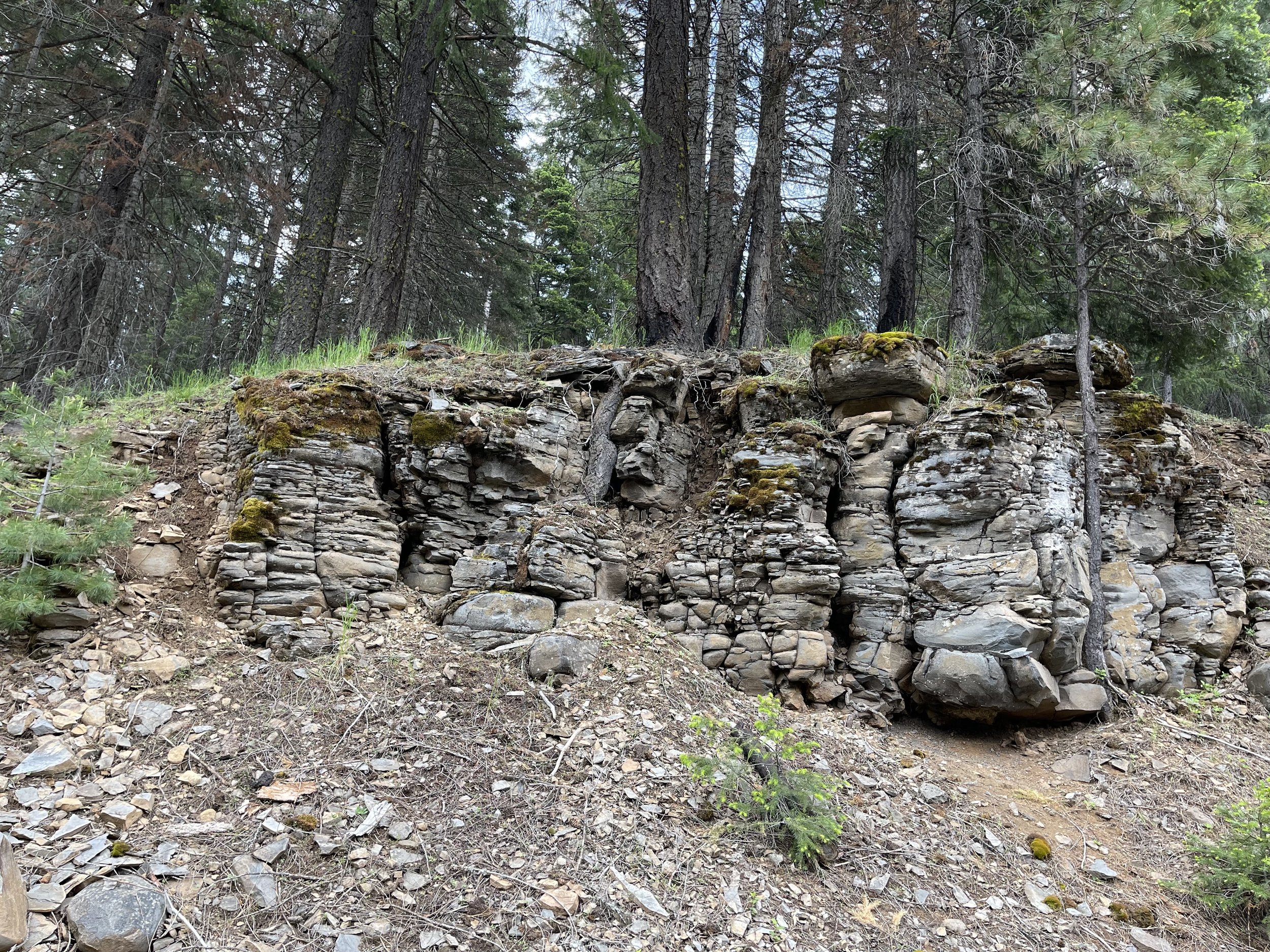On Friday, June 9, the Ashland Food Co-op Community Classroom was full to the brim with geology enthusiasts. As additional chairs were being located, Jad D’Allura took his place at the front of the room to begin his presentation. Jad has spent a lot of time in the world of geology, particularly that of Southern Oregon. After receiving his Ph.D. in geology from UC Davis, he worked for Texaco as an exploration geologist for two years before coming to work for Southern Oregon University for 33 years prior to retirement. Yet he still continues to do basic geology research with University of Oregon undergraduate seniors in the Monument.
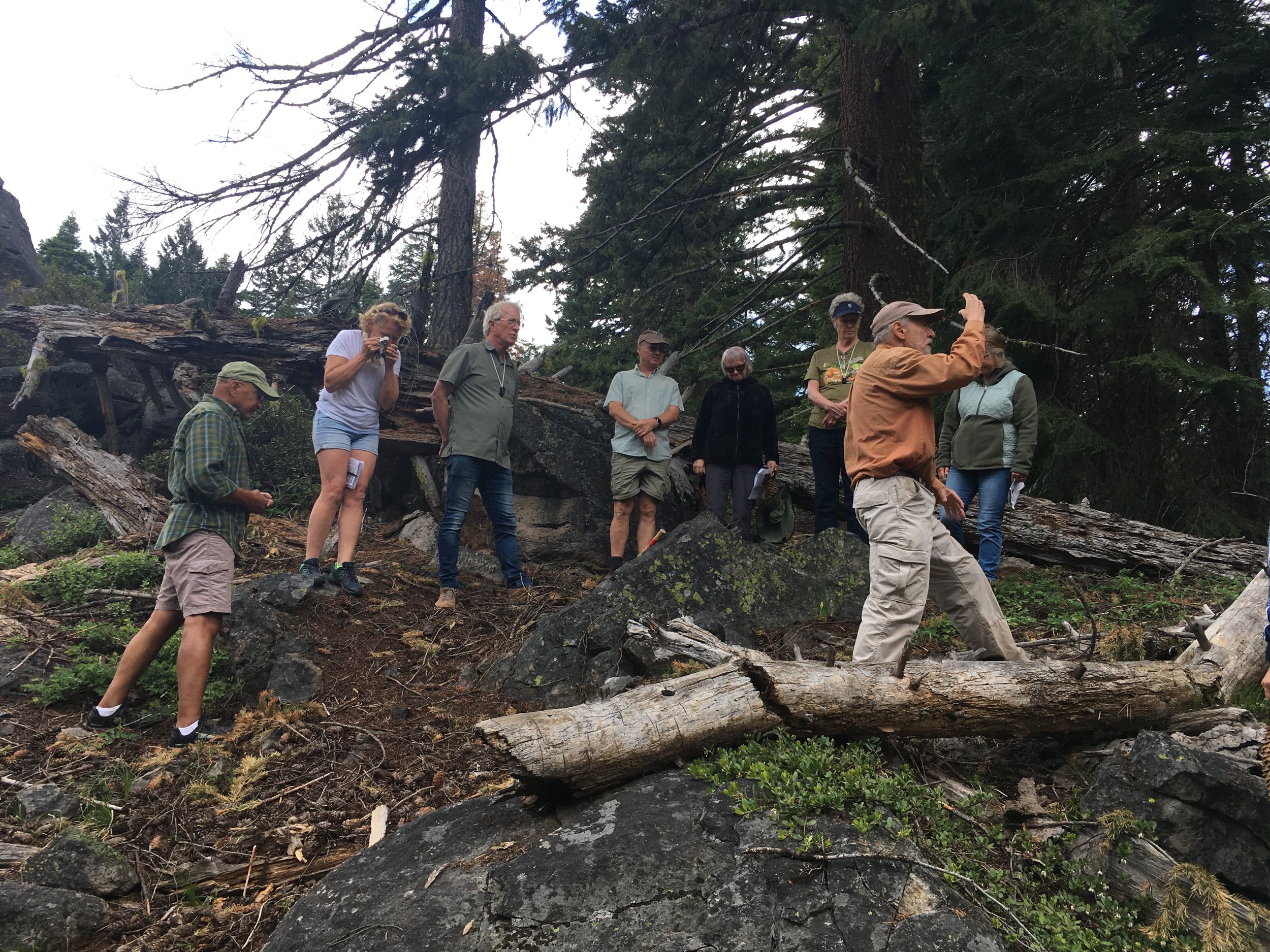
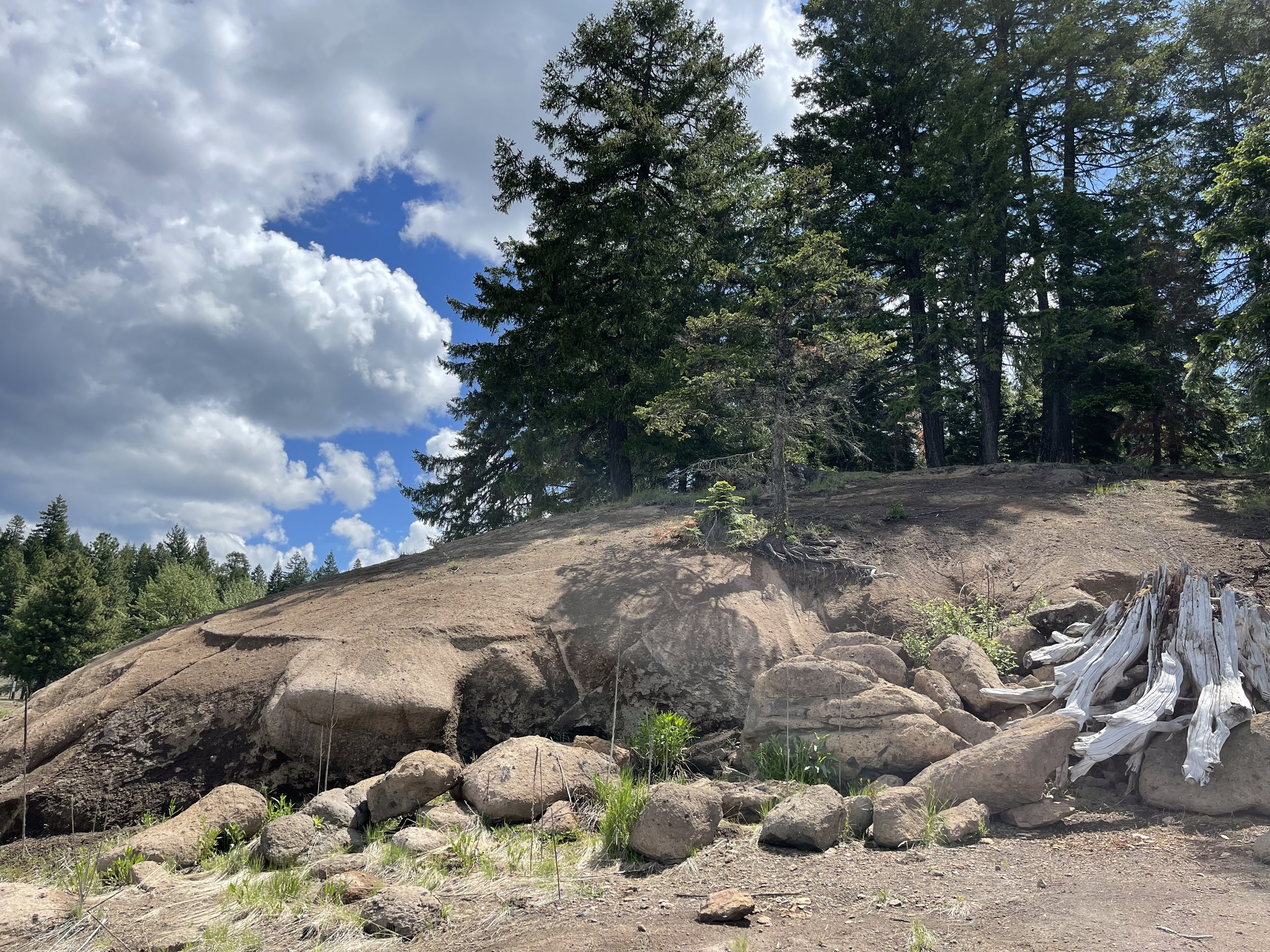
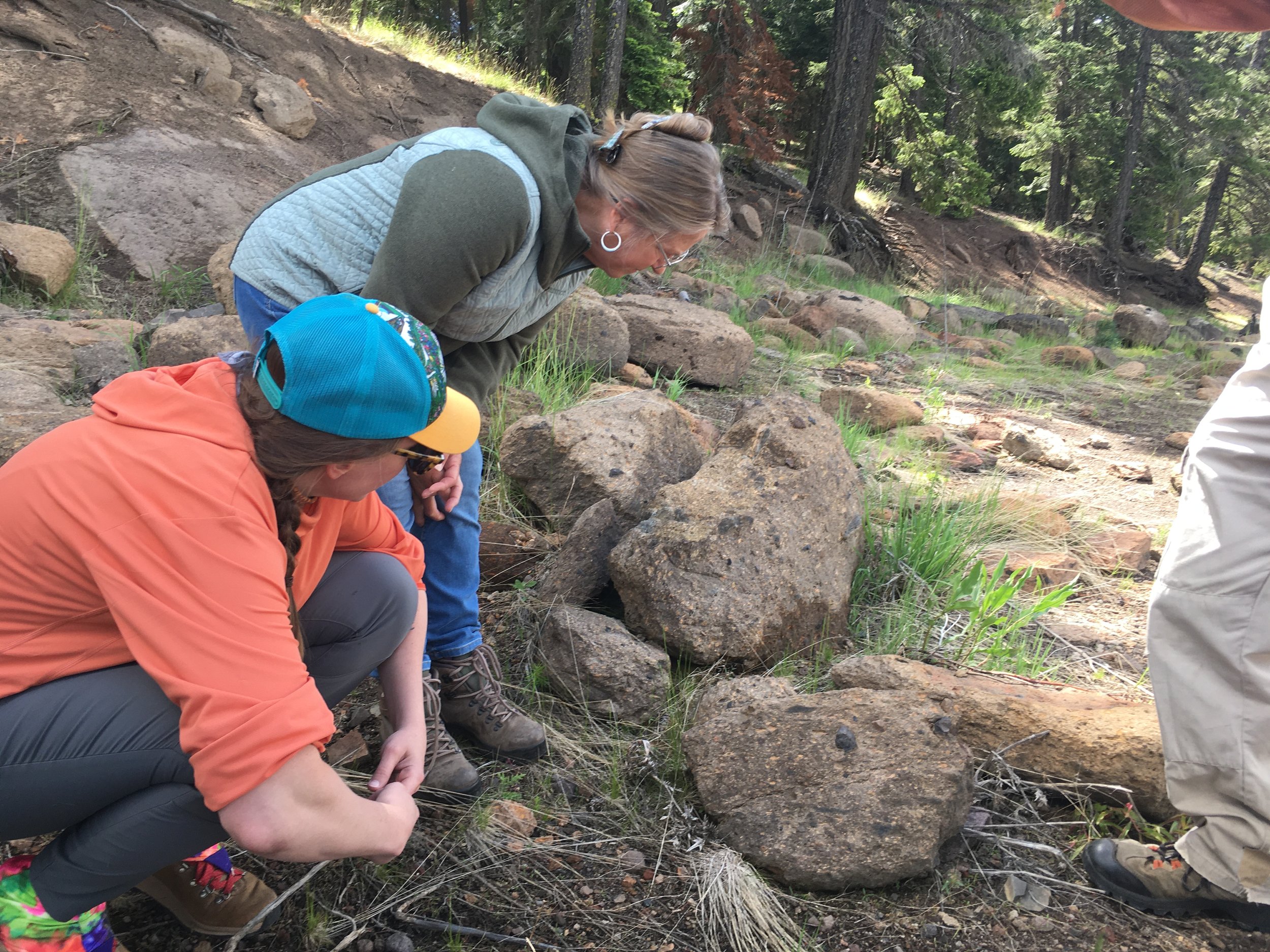
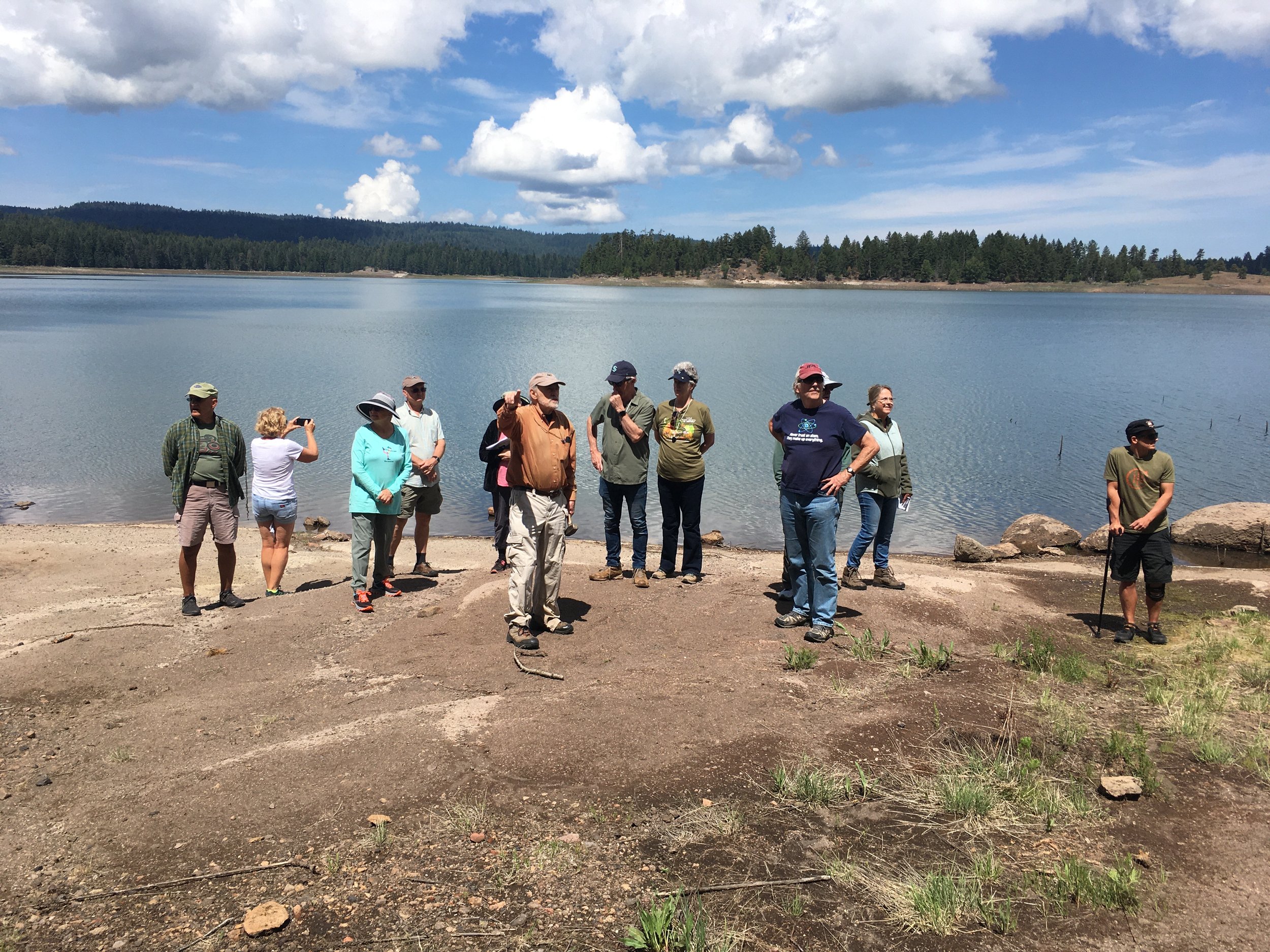
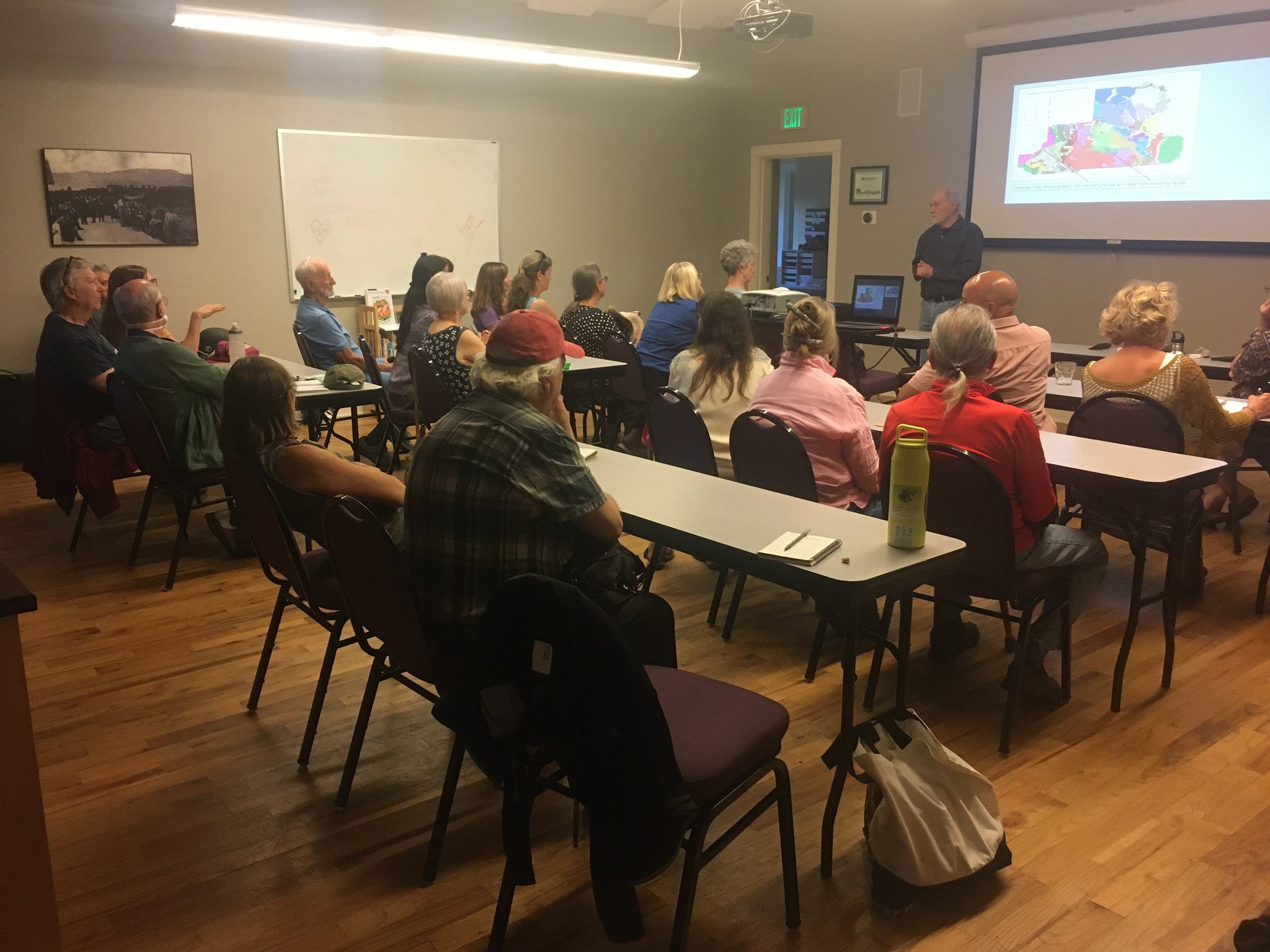
The Cascade-Siskiyou National Monument comprises 114,000 acres set aside for its biodiversity. Still, it’s only natural that that biodiversity would rest upon a diverse and fascinating geological foundation. The Monument itself is made up of two mountain ranges including the Cascade Mountains and Siskiyou Mountains. In particular, its geological history has been characterized by volcanic activity with most of the rocks found in the Monument being volcanic in nature. But, what exactly is a volcano and how is it formed? It would be difficult to find someone better qualified than Jad to answer this question.
A volcano is a rupture in the Earth’s crust fundamentally caused by plate tectonics. In the case of the Monument, the denser oceanic crust (the Juan de Fuca Plate) is pulled beneath the less-dense continental crust (North American Plate) at the Cascadia Subduction Zone. This process usually results in earthquakes. The upper mantle is then melted due to water released by the downgoing oceanic crust in a dehydration reaction. This melting generates less-dense magma that may then rise through the denser crust and erupt at the surface, forming a volcano.
We learned that volcanic rocks will appear as different colors depending on how quickly that magma rises to the surface. Rapidly rising magma contains more iron and appears darker, such as basalt. Magma that is slower to rise, or is interrupted, has a chance for crystals to form within it and is lighter in color due to less iron. An example of this type of rock is andesite.
When someone thinks of a volcano, what usually comes to mind is a cone with the top neatly shorn off. While this can be an example of a stratovolcano, or composite volcano, another very common type of volcano found in the Monument are shield volcanoes. Shield volcanoes tend to be lower in profile and very basaltic. In fact, much of the volcanic remnants in the Monument are hidden in plain sight. Pilot rock is one such remnant. What was once a large volcano with spreading and sloping sides has been eroded away over millions of years to the point where only the neck, or vent, remains.
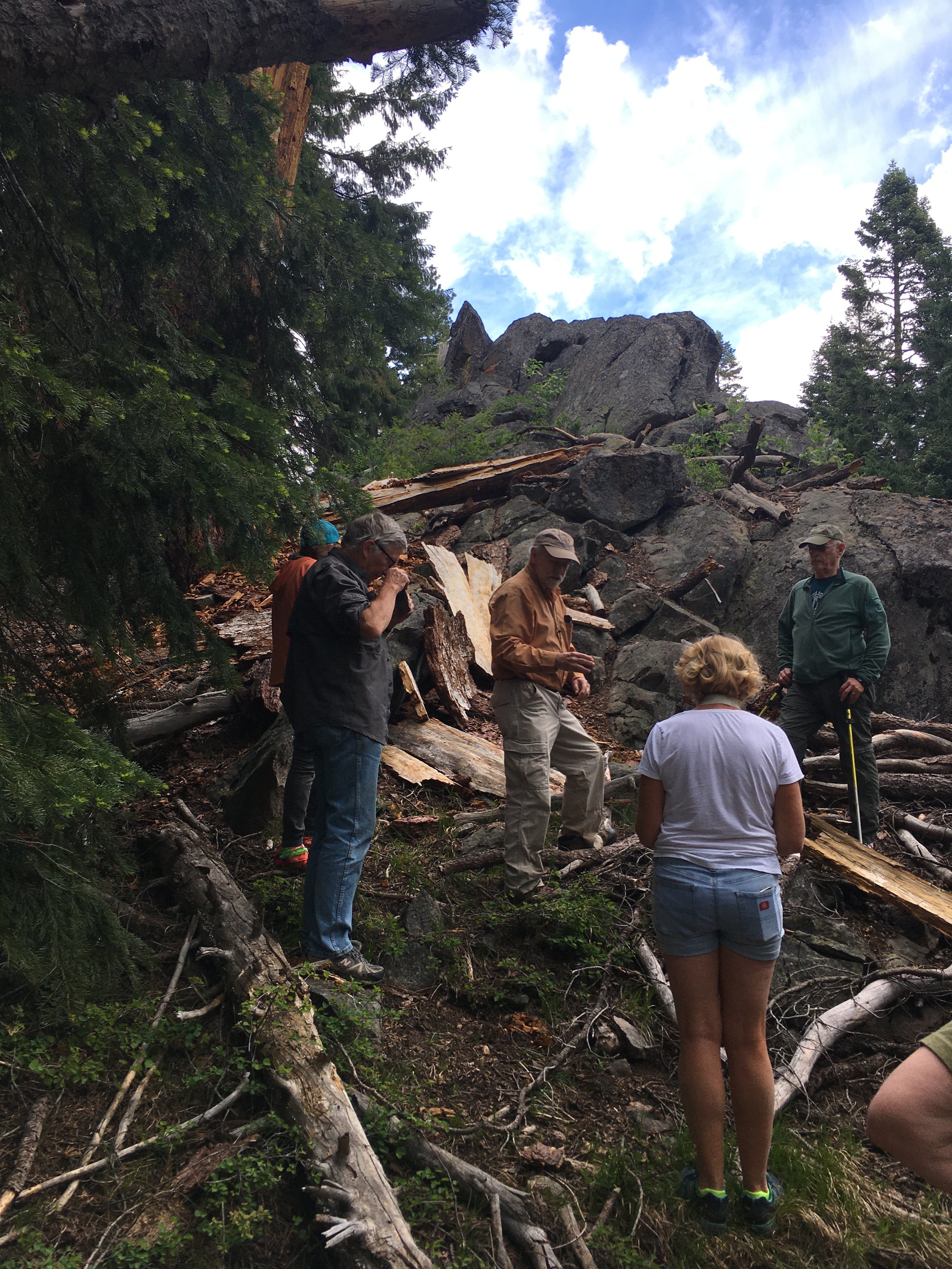

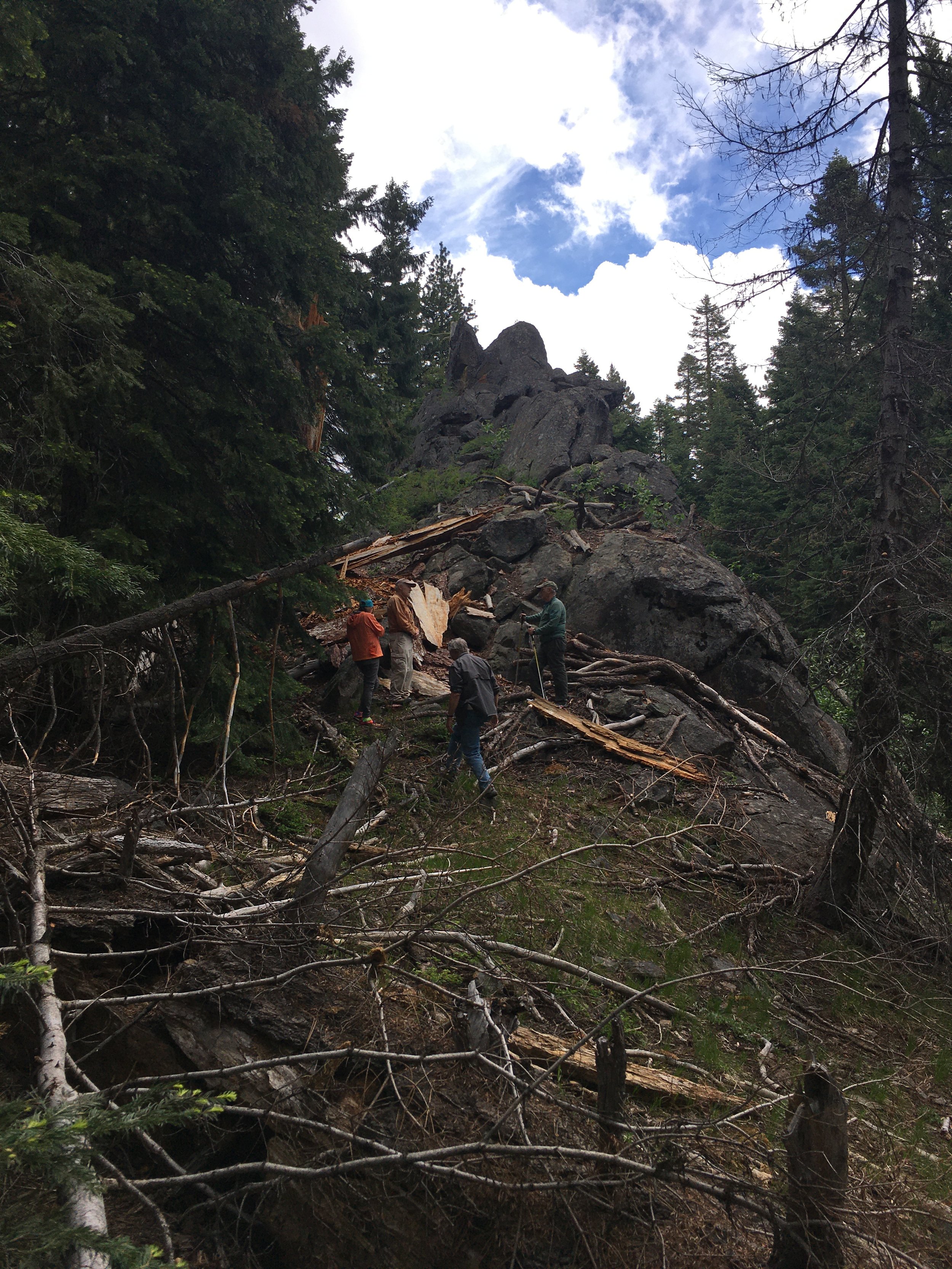
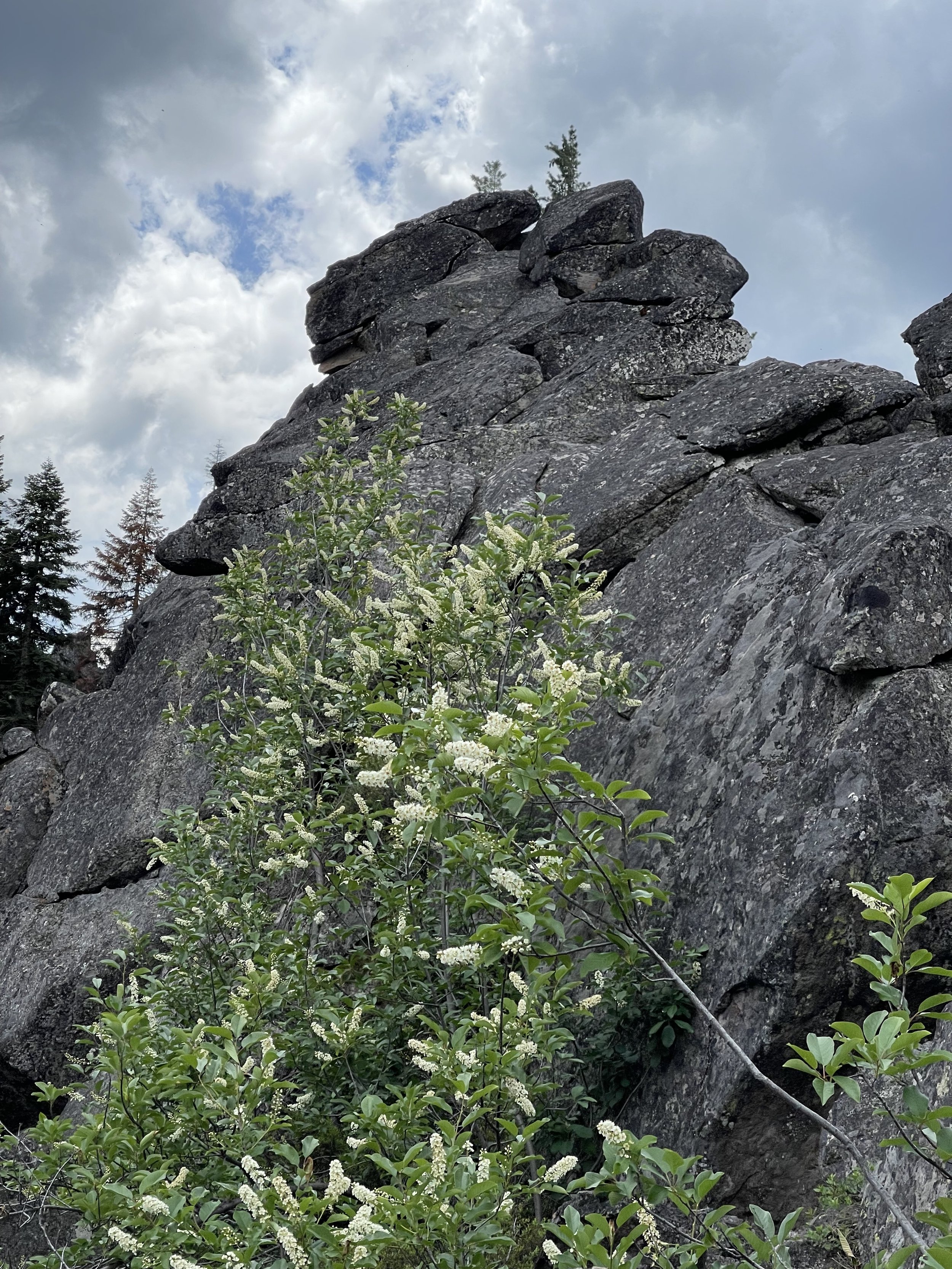
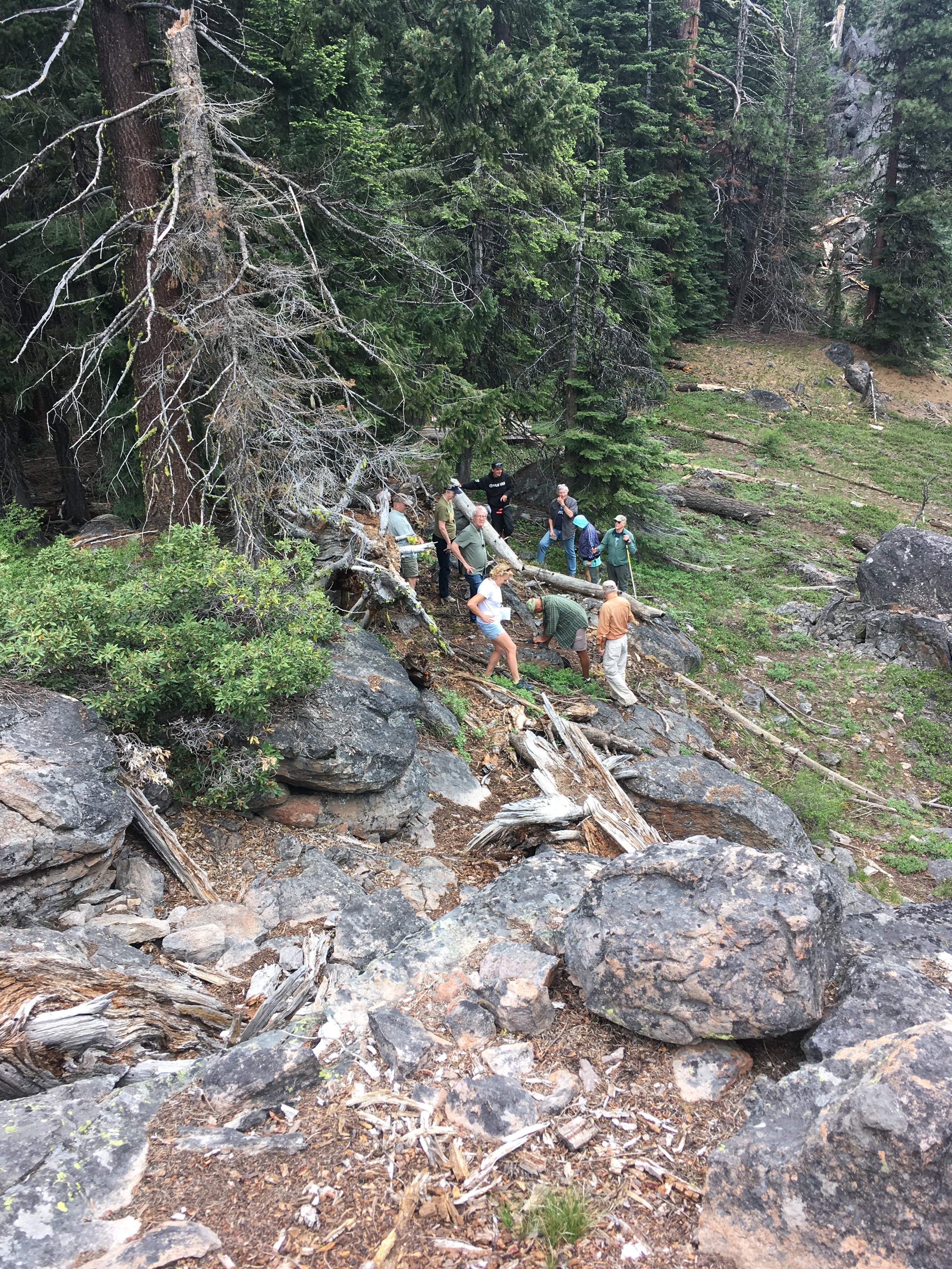
At this point in Jad’s presentation, we finally got around to addressing the original question: How has the geological underpinnings of the Monument contributed to its incredible biodiversity? Jad made sure to not leave this stone unturned. Land bridges were created between distinct regions due to the activity of faults, such as the Siskiyou Summit Fault. This allowed for the movement of flora and fauna around the landscape. Additionally, the cooling and shrinking of lava provided conduits and reservoirs for water. Even the diversity of soils can be traced back to the Monument’s geology as different soils are derived from different rock types. These different soil types allow for varying levels of permeability and can be observed with the naked eye through patchworks of vegetation types.
On Saturday, June 10, Jad then took our intrepid group of participants on a geological tour of the Cascade-Siskiyou National Monument itself. There, they transferred knowledge from diagrams and pictures to real rock formations, a process made much easier with our capable guide! Our tour of the Monument took us up Indian Memorial Highway to see the Colestin and Roxy formations. We stopped at the side of the road to look at basaltic andesite rocks and the debris from ancient eruptions and lava flows.
An unexpected fringe benefit of cutting roads through mountains is the layers of rock that are exposed. This is where our group found ourselves as vehicles whizzed by and Jad, armed with a hammer and pick, chipped off bits of rock to give us a glimpse into eons of time.

